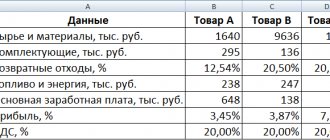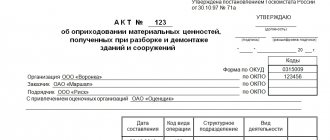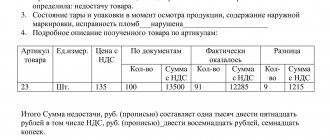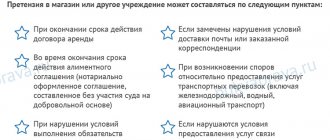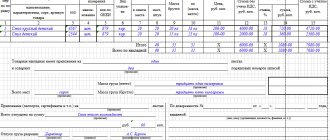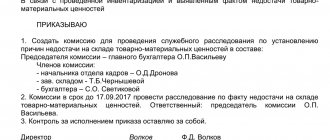How does culling happen?
Goods entering the organization must be checked for:
- quantity,
- weight,
- grade,
- integrity of packaging, etc.
This is necessary to ensure that a product of inadequate quality does not go further along the distribution chain, does not enter production lines and does not lead to any unpleasant consequences for the purchaser.
Typically, verification is carried out by simple inspection, counting or weighing.
If any defect or defect is detected in the arrived cargo, a special report is drawn up about this. Further actions are determined by agreement between the parties.
In some cases, not the entire batch of goods is subject to inspection, but selected products (the parties must discuss such points in advance).
https://youtu.be/APob_eNVqmg
What defects can be considered a marriage?
All kinds of defects, flaws and malfunctions due to the fault of the manufacturer can be recognized as defective:
- mechanical damage,
- late,
- packaging crumpling,
- swelling of the cans,
- the battle,
- lack of covers, etc.
It would be good if all possible types of marriage were indicated directly in the contract.
Breakdowns that occur during delivery, either by the transport organization or by the buyer themselves, cannot be considered defective.
What to do with defective goods
Before concluding a contract, the parties must determine what to do with the defective product - situations of identifying such products are not at all uncommon, and this should definitely be provided for.
The most common options are:
- In the first case, the buyer returns the defective products to the supplier, and he reimburses the money spent on it.
- In the second, the supplier offers the consumer a discount that can compensate for expenses incurred as a result of the defect.
- Another way: reducing the buyer’s debt through writing off defective inventory items.
- It happens that when a defect is detected, a banal replacement of an unsuitable product with a product of proper quality occurs.
When is a product defect report drawn up?
The presence of defects in a product in most cases leads to the fact that it cannot be used for its intended purpose. This means that its buyer or manufacturer bears losses. And these losses must either be written off or compensated. To do this, a documentary basis is required, and it is in this capacity that the marriage certificate is used, which records the fact that defects in the product have been identified.
There are three main situations when a product rejection act is drawn up:
- The production process was disrupted, resulting in defective products. In such an act, in addition to the description of the defective product, the person responsible for the release of the product is also indicated. Subsequently, according to the act, the products are written off and, if possible, sent for processing. If it is proven that a certain employee is guilty of releasing a defect, he can be held accountable in accordance with labor laws.
Claim form for defective goods - When purchasing a product, upon inspection it turns out that the product is defective. Then, after drawing up the act, the buyer refuses to accept the goods, and subsequently demands either a replacement with a similar, high-quality product, or refuses the contract.
- The defect was discovered after receiving the goods from the seller or supplier. To confirm the presence of defects, a marriage certificate is also drawn up, and in the future, again, the buyer puts forward his demands to the counterparty.
This is not an exhaustive list of situations where a product defect report may be required. But the principles of its compilation are almost always the same.
Who draws up the act
Usually, the condition of the arrived goods is monitored by a strictly defined person, whose job description includes this responsibility. It is he who inspects the entire batch of products and looks for possible defects. This person, as a rule, is financially responsible , and therefore the demand from him is corresponding. When there is a defect in the inspection process, this employee generates a rejection report.
Other employees of the enterprise or a specially created commission appointed by a separate order of the head of the enterprise are also involved in drawing up the document. The commission must include at least three people from among personnel with sufficient qualifications, knowledge and experience to determine the quality of the incoming products.
It should be noted that the act must be drawn up directly on the day of acceptance of the goods.
Who signs the product rejection certificate?
In order to record the presence of a defect, it is better to collect a commission. Who will be on this commission depends on the situation. If a defect is discovered during the transfer of goods, then representatives of the seller and buyer are included in the commission. If a defect is discovered in production or after purchase, members of the commission appoint persons responsible for storing the product or its production. It all depends on the company's staffing schedule.
In addition to the signature of the commission members, the head of the company also leaves his signature on the act, thereby approving the marriage act.
What to pay attention to when drawing up an act
At this point in time, there is no strictly established sample of the culling act. Based on this, representatives of organizations have every right to write it in free form or according to an internal template approved in the company’s accounting policies.
At the same time, which writing method the company chooses does not affect the mandatory information that any such document must contain:
- date, number, place of compilation,
- full (indicating the organizational and legal status) name of the company,
- positions, surnames, first names and patronymics of the commission members present during the culling.
It is better to format information regarding defective products in the form of a table, where you should enter:
- name of the defective product,
- quantity,
- date of receipt,
- the nature of the defect (swelling, drips, mold, improper grade, etc.),
- service life, etc.
The size of the table can be completely arbitrary, depending on the parameters of the product that the buyer wishes to indicate in this document.
The act can be drawn up for one type of product or for several at once.
If there are several names, then they should be assigned serial numbers in the table.
Some additional documents (for example, an expert’s opinion) may also be attached to the act. Their presence must be indicated in the information part of the form.
Certificate of return of defective goods – Documents of the enterprise’s office work
Current legislation carefully regulates the procedure for concluding a supply agreement.
The subject of such an agreement is various goods (including the manufacturer’s products). Legal relations related to the supply of goods received their legislative regulation in §3 of Chapter 30 of the Civil Code of the Russian Federation (Articles 506 - 524). This paragraph also contains certain rules that regulate the procedure for returning defective goods, i.e.
goods that do not meet the requirements established by the contract.
If the customer was supplied with defective and damaged goods, then first of all he must study the contract concluded with the supplier.
Important: the parties generally stipulate the procedure for resolving disputes, as well as replacing defective goods in the contract. If such a procedure is not established, then the rules of Art. 518 Civil Code of the Russian Federation.
In practice, the customer mainly inspects the delivered goods and if they do not meet the requirements established by the contract, a corresponding act on the return of the defective goods is drawn up.
Many people are interested in the question of how to correctly draw up an act for the return of defective goods.
Important: it is recommended to form a commission, which consists of several persons, and check the delivered goods. It is advisable that the commission have at least 3 members.
It is advisable to document the formation of the commission and its powers (for example, make an appropriate decision, which will be signed by the head of the customer company).
Important: it is advisable that, together with the customer, the delivered goods are checked by a representative of the supplier. If the supplier's representative takes part in the inspection, he must also sign the return of the defective goods.
The act must be signed by all members of the commission after checking the delivered goods.
The text of the act on the return of defective goods must indicate the following information:
- supplier and customer data (name, address, etc.):
- information about the concluded contract;
- date and place of drawing up the act;
- information about the transport company that delivered the goods;
- description of the packaging condition of the goods;
- indication of the quantity of defective goods and its detailed description;
- detailed description of defects and possible causes;
- the amount of the defective product that is being returned.
After drawing up the act and signing it, the defective goods together with the act are returned to the supplier. If the customer has paid in advance for the delivered goods, then an invoice is drawn up along with the act, which must be paid by the supplier.
After receiving the act, the supplier must either replace the damaged goods or return the amount to the customer.
Important: it is advisable to also provide in the act a period for replacing the goods and returning part of the money paid.
If, after the expiration of the specified period, the supplier has not complied with the customer’s requirements, the latter may file a statement of claim in court to resolve the dispute in court.
2. Full name of the authorized person _____________________________________________________________________
3. Supplier’s delivery note and invoice number _____________________________________________________
4. Transport company __________________________________________________________ according to transport invoices No. _______________________________________________________________
6. Number of places received _____________________________________________________________________
| № | Name of product | Description (detailed description of the product, description of the defect, etc.) | Invoice No. | Price | Qty | Sum |
| 1 | ||||||
| 2 | ||||||
| 3 | ||||||
| 4 | ||||||
| 5 | ||||||
| 6 |
Total amount, rub. (in words) _____________________________________________________________________ including VAT, rub. (in words) ___________________________________________________________________
Conclusion of the commission on the nature of the identified defects in the product (goods) and the reason for their occurrence_________________________________________________________________________________________
The defective product is sent along with a defect report and an invoice for the amount of the defect to the supplier for review. The act is drawn up by a commission consisting of representatives of the supplier and buyer. Members of the commission are responsible for signing an act containing data that does not correspond to reality.
M.P.
Accounting Returning goods to the supplier is an unpleasant and, unfortunately, common procedure. We tell you what documents to fill out to return goods to the supplier, how to correctly draw up a report and other necessary accompanying documents, what entries to use for accounting.
March 1, 2020 Evdokimova Natalya
The relationship between buyer and seller does not always develop without problems. For example, a situation may arise when you need to return products, for which you will need a sample certificate of return of goods to the supplier.
This can happen in the following situations:
- Poor quality purchase. The buyer has the right to legally return goods that do not meet the quality requirements established by the terms of the contract (agreement), in accordance with clause 2 of Art. 475 of the Civil Code of the Russian Federation, Law No. 2300-1 “On the Protection of Consumer Rights”.
- The delivery does not comply with the terms of the contract. If the seller mistakenly delivered more units of goods, the buyer returns the excess cargo (Article 466 of the Civil Code of the Russian Federation). Conversely, if the purchasing organization identifies a defect, it has the right to return the entire batch.
- Shipment of incomplete products. Based on Art. 480 of the Civil Code of the Russian Federation, the buyer has the right to demand a reduction in price or delivery of missing parts of the goods, otherwise - return the entire batch of incomplete products.
- Inconsistency of the product range with the terms of the sales contract. If the seller delivered products that differ from the specifications, then the receiving company can return the products or the entire batch (Article 468 of the Civil Code of the Russian Federation).
- Product delivery time is overdue. This may also be a reason to refuse the cargo. An exception is if the receiving party did not promptly notify the supplier of the refusal to accept products with an overdue delivery date. In this case, it will not be possible to return the products (Article 511 of the Civil Code of the Russian Federation).
More on the topic How long does maternity leave last, and how is it paid?
Before you begin the return shipment procedure to the seller, send him a written notice or simply a letter (Article 483 of the Civil Code of the Russian Federation) to coordinate the shipment. The procedure must be formalized to eliminate controversial situations.
If the contract specifies the conditions for the return of products or the procedure is carried out on legal terms, then there is no need to draw up an additional agreement to the contract. In other cases, it is necessary to change the terms of the contract or conduct a separate transaction that details the conditions for the return of purchased products to the supplier.
The main document confirming the fact of return shipment of purchased products is the product return certificate. For registration, you can approve your own form, taking into account the specifics of the institution, or use the forms approved by Resolution of the State Statistics Committee of December 25, 1998 No. 132:
- TORG-2 (OKUD 0330202);
- TORG-12 (OKUD 0330212).
The act can be drawn up both in written and printed form. When drawing up the document, please indicate the required details:
- Date and place of document preparation.
- Full name of the counterparties participating in the return procedure.
- Detailed list of materials, products, products.
- Reasons for carrying out the return procedure.
- Link to a document confirming the buyer’s legal right to return the product. The results of an independent examination of product quality, a link to violated clauses of the contract, and specifications may be indicated here.
- Terms and conditions for the return transfer of materials (buyer’s requirements).
- Details and signatures of the parties, seals (if any).
Please note the rule: only managers or authorized representatives of the parties can sign the act. You can confirm your authority with a power of attorney of the established form (form M-2).
The document is drawn up in the required number of copies, but not less than two (for the supplier and the buyer).
Be sure to attach a return invoice, a letter of claim (accompaniment letter), and the results of an independent examination of product quality (if defective material is supplied) to the report.
There is no standardized form for a letter to return goods. Consequently, the document will have to be generated in any form. It is advisable to fill out the letter on the institution’s letterhead. Otherwise, you will have to enter all the registration data about the applicant company, that is, about yourself.
So, the structure of the letter to return goods must meet the following requirements:
- Applicant information. Indicate the name of the organization that received the defective product. Also write down the TIN and KPP, the legal and actual addresses of the company, if they differ. Be sure to include contact information, such as phone number, email address. Also indicate the responsible employee who can be contacted to resolve the issue. This will greatly speed up the solution to the problem.
- Recipient information. First, indicate the position of the manager, the name of the organization that violated the terms of delivery of the goods, full name. boss Enter the TIN, checkpoint, address and telephone number in the same order.
- The name of the document, for example “Letter to return goods” or “Claim”.
- Now describe the essence of your appeal. Start by indicating the details of the agreement (contract, agreement), the terms of which were violated. Then outline the recipient's obligations. That is, write down what the company was supposed to do under the contract. Next, you should write down the facts revealed as a result of the delivery (which is why you had to apply). For example, indicate that the product is of poor quality, the wrong product was delivered, or something else. Then outline your requirements. For example, to supply a high-quality product, replace non-conforming parts, product components, or other things. You can specify a specific period of time during which the defect should be eliminated.
- Attach copies of documents confirming the circumstances. Indicate supporting documentation in the form of a list of attachments to the letter for the return of goods. Be sure to include a receipt and invoice for returning the goods.
More on the topic Court order for the collection of alimony: sample application for issuance
Registration of the act: main points
The law does not impose any special requirements on the design, as well as on the content of the document: it can be written by hand (with a ballpoint pen of any dark color, but not a pencil) or printed on a computer on a simple blank sheet of paper or on the organization’s letterhead.
Only one rule must be strictly observed: the act must be signed by all employees of the enterprise who were present when the goods were rejected and the document was drawn up (the use of facsimile, i.e., printed in any way, autographs is unacceptable - only “live” signatures are needed).
It is not necessary to endorse the act using a seal or stamp, since since 2020 legal entities have every right not to use stamps in their work.
The act is written in at least two copies , one of which remains with the buyer, the second is sent to the supplier of the goods. If necessary, additional copies can be made (for example, for committee members).
What points need to be displayed in the product defect report, sample
| Form of act of acceptance of defective goods goods |
The act must indicate:
Subscribe to our newsletter
Read us on Yandex.Zen Read us on Telegram
- Time and place of its compilation.
- Time and place of production or acquisition of goods. In the second case, the reasons for the acquisition are also indicated, for example, details of the supply agreement.
- Circumstances under which defects in the product were discovered.
- If possible, the amount of losses incurred is indicated.
As already mentioned, there are no clear requirements for the form of the act in the legislation. If necessary, you can take as a basis the sample report on defective goods posted in this article.


